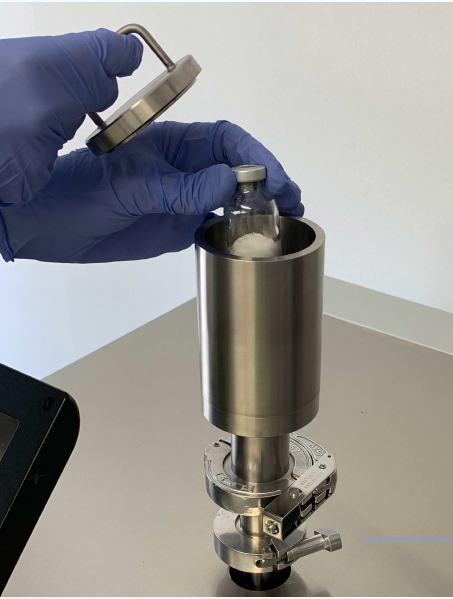Helium Leak Detection & Vial Crimp Force Measurements
การซีลขวด vial อย่างเหมาะสมมีผลต่อความสมบูรณ์ของบรรจุภัณฑ์ยา Leak Detection Associates (LDA) ได้ทดสอบการรั่วไหลของฮีเลียมในขวดที่ใช้แรงกดของการคริมป์ต่างกัน ผลลัพธ์ยืนยันว่า แรงกดต่ำอาจเพิ่มความเสี่ยงต่อการรั่วไหล ซึ่งเป็นปัจจัยสำคัญต่อความปลอดเชื้อและคุณภาพของผลิตภัณฑ์
THE CHALLENGE
A global pharmaceutical equipment entity (Client A) approached Leak Detection Associates (LDA, now a PTI company)
with vials for helium leak testing services. Client markets vial sealing/ crimping machinery as well as residual seal force measuring equipment. They were interested to see how various levels of crimping force in these vials would affect helium leak rate data.
THE SOLUTION
Client A sent to LDA ninety (90) 2R size glass vials that were prepared with three (3) levels of crimping compression force. LDA first prepared the samples by filling/flushing with their Helium Filler Device. This device utilizes two small gage syringes that puncture the stopper. This allows a helium inlet flow and a helium exhaust flow into the vial which displaces the existing headspace air. Once flushed (25 second flow cycle), the puncture sites were sealed with an adhesive backed foil disk. This disk makes intimate contact with the aluminum crimp and prevents any helium from escaping the previously created syringe punctures. This eliminated the possibility of any leak rate signal caused by the puncture sites. All vials were tested by utilizing a SIMS helium leak detector. Helium leak rate data was collected from all three vial sets.

THE RESULT
With the helium leak rate data from the vial samples analyzed, it was of interest to note that the high and medium
crimp compression samples had similar leak rates – all were in the low/mid 10-9 mbar-L/sec. However, when the
low compression samples were reviewed, all of the leak rates were a decade higher – most ranged in the low/mid
10-8 mbar-L/sec. One vial sample posted a leak rate of 2.0 x 10-7, a full two decades higher than the high and medium compression vial samples. Although none of the samples tested exceeded helium leak rates that would be considered failing, the data and results obtained from this case clearly confirm that compression crimp forces play a significant role in container closure integrity. If crimp forces are allowed to fall too low, conditions may arise that could lead to the potential for product sterility issues – microbial ingress


